“Humankind has not woven the web of life. We are but one thread within it. Whatever we do to the web, we do to ourselves. All things are bound together. All things connect.” (Chief Seattle, 1854)
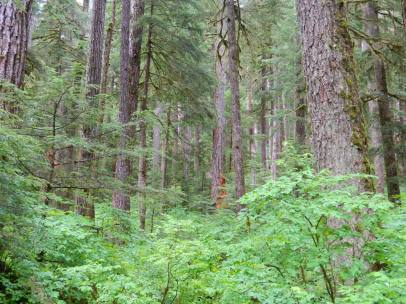 I try not to make it a practice to write about things of which I know nothing. That just seems common sensical. But sometimes, there are things that are so grand and so mysterious that writing about them is how I can get closer, how I can touch the magic.
I try not to make it a practice to write about things of which I know nothing. That just seems common sensical. But sometimes, there are things that are so grand and so mysterious that writing about them is how I can get closer, how I can touch the magic.
Recently, Bill and I spent a few days in the Olympic National Forest with some dear friends. After so many months of pandemic isolation, it felt wonderful to get away and to socialize among our fellow vaccinatees. When we move up to Seattle forty years ago, the place I wanted most to see was the Hoh Rainforest in the Olympic National Park. Life had other plans for us, however, and it took four decades for that expedition to take place.
It was worth the wait.
In anticipation of that adventure, and since our return, I’ve been reading about trees and forests. What I’ve learned has both inspired and disheartened me. There is so much we are only recently beginning to understand about forest ecology, or as some are calling it, the “Wood Wide Web.” What scientists are discovering is a game-changer for planetary health, but human action—or inaction—puts us in a race to heal the earth before it’s too late.
When most of us look at trees, we see only what is above-ground: the trunk, the branches, the leaves, maybe some of the creatures inhabiting it. We may notice that this tree is growing very closely to that one, or that mosses, fungi, and other smaller vegetation cluster in their vicinity, but we tend to see everything as separate—just as we view people as separate from one another.
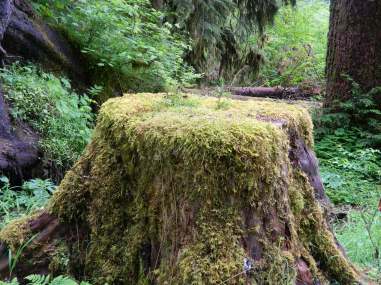
A Mother Tree, nurturing seedlings and providing nutrients for its neighbors
Evidence from science now clearly indicates the interrelatedness of all these living florae. Trees and plants and fungi are not only intertwined physically, they communicate in complex and sophisticated ways. They protect one another, they share essential nutrients, they warn of danger from insects, weather, or chemicals. If a tree is ailing, other trees—regardless of species—send nourishment its way. If a tree is dying, it “wills” its remaining vital nutrients to its neighbors. And even in death, a “mother tree” continues to nurture the forest, providing sustenance for the next generation of seedlings.
The beauty and complexity of these ecosystems is staggering and our ignorance of them is contributing to their demise, which may, in turn, contribute to our own. These essential forests help sustain our breathable atmosphere. They cool the earth by reflecting sunlight and providing precipitation; they capture and store carbon emissions and help regulate climate; they contribute to rich and fertile soil. Yet in much of the world, sustainable logging practices have been superseded by clear-cutting and other destructive practices that jeopardize land, soil, water, atmosphere, and living organisms across the planet.
Even now, as we are beginning to understand the critical importance of forests—especially old growth forests—we struggle to communicate it. Somewhere I read that most of us don’t even have the vocabulary to comprehend the complex bionetwork that has been evolving for as much as 600 million years into a vast and intricate symbiotic community. And we puny human newcomers pretend to have all the answers…. Our adorable arrogance may be our ultimate downfall.
In his extensively researched novel, The Overstory, Richard Powers explores the parallel world of the forest, revealing its magnificence and interconnectedness, and the potential catastrophe awaiting us if we fail to learn from it. The novel’s characters, settings, and stories are as interwoven as the forest itself, making for a read that is dense, breathtaking, and unputdownable. The book is well-deserving of its 2019 Pulitzer Prize in fiction. I recommend it highly.
There are plenty of non-fiction explorations of forests, as well. A good place to start is Ferris Jabr’s recent article for The New York Times Magazine, “The Social Life of Forests,” which follows Professor Suzanne Simard, ground-breaking forest ecologist and pioneer who is leading the way in this new field of research. Her own recent book, Finding the Mother Tree: Discovering the Wisdom of the Forest, is also a page-turner. Another book I just finished and absolutely loved was Lyanda Lynn Haupt’s Rooted, which talks extensively about trees, but also explores other amazing and complicated ways humans are connected to our wild and mysterious natural world.
There is still so much I want to learn and understand about forests and trees. They have a lot to teach the human community—if we would only listen. I feel blessed to have had a recent opportunity to see one of the most beautiful and awe-inspiring places on the planet. I hope what I saw and felt in the Rainforest will help me become a better and more responsible citizen of the earth.
“I do not think the measure of a civilization is how tall its buildings of concrete are, but rather how well its people have learned to relate to their environment and fellow man.” (Sun Bear of the Chippewa Tribe)

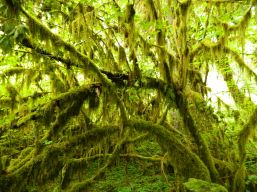
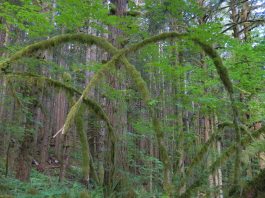
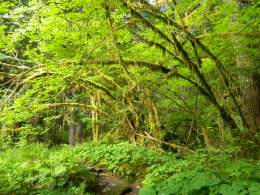

Richard Powers’ novel, The Overstory, left me in awe — gobsmacked. The thread carrying the story of tree communication was enlightening and heartbreaking, and the other, linking threads (roots?) were rewarding, as well. I would highly recommend this novel to anyone who likes to think as well as feel while they read. That you recommend it encourages me to try the nonfiction titles you mention, too.
LikeLiked by 3 people
Gobsmacked is the perfect word for it, Kathi. Since reading that book, I look at trees in an entirely new way, and it certainly enriched our trip to the Rainforest. What a gift it is to run into one of those life-changing, earth-shattering books!
LikeLiked by 1 person
Loved this piece, Donna! I could not have said it any better! My tree-book collection, including Powers’ book, has grown since I started writing my memoir so many years ago. Will be sharing this one!
LikeLiked by 2 people
Thank you, Nancy. Your own beautiful memoir, “Under the Birch Tree,” is another great choice for books about nature and connectedness. Thanks so much for reblogging.
LikeLike
Reblogged this on Nancy Chadwick, Writer and commented:
Donna Cameron, author of A Year of Living Kindly, reflects on a recent trip she and her husband took to a national forest. But it wasn’t just about visiting a bunch of trees . . .
LikeLiked by 2 people
I loved this post Donna. And I must read Richard Powers’ book, so thank you for mentioning it.
LikeLiked by 2 people
Thanks, Fransi, I think you’d love his book, and you’ll never look at a tree the same way.
LikeLiked by 1 person
It sounds like you had so much more than a holiday with friends, as wonderful as that would be on its own. I am definitely getting the book.
LikeLiked by 1 person
It really was the perfect place to go after quarantining for 15 months.
LikeLiked by 1 person
I’ve learned a lot about the interconnectedness of trees as a result of losing 21 oaks and pines during a tornado that struck out one-acre property in Wisconsin in 2019. We also lost hundreds more in a five-acre forest lot nearby. Although no humans were killed, I deeply mourned those trees. One of the tall oak stumps came back, to my delight, due to the underground network, I believe, if two nearby oaks. I wrote about that in my blog at http://www.sailorstales.Wordpress.com
LikeLiked by 2 people
Oh, that must have been devastating, Lois! In addition to the terror of being in such a powerful tornado. I can’t imagine. Watching the way your land and trees recovered, along with the new trees you planted, must have been fascinating and deeply satisfying. Thank you!
LikeLike
That Chief Seattle quote is one of my favorites. Beautiful photos, and beautiful post. Reading it made for a lovely start to my day here in Memphis – a place that was (is, will always be) also a forest and that wants desperately to return to its natural state.
LikeLiked by 2 people
Thanks, Jennifer. I’ve never been to Memphis, and didn’t realize it was forest-y. It sounds beautiful.
LikeLike
Thank you for this. So many things, human can learn.
LikeLiked by 2 people
Thank you. I just hope enough of us learn in time to save the planet. Thanks for visiting and commenting.
LikeLiked by 1 person
Nuture is a teacher. Many of us don’t know that.
LikeLiked by 1 person
I’m with you. It’s impossible to say enough good things about trees. By the way, I don’t think I’ve seen the word “vaccinatee” before. It’s a good one.
LikeLiked by 2 people
Thanks, Neil … now I’m wondering what trees are saying about us!
LikeLike
A wonderful enlightening post Donna. The Over Story is on my must read list
LikeLiked by 2 people
Thanks, Val. I think you’ll love it, and you’ll see trees with new eyes.
LikeLiked by 1 person
You’re so right, Donna! We are all so interconnected, but we resist that idea so much with our squabbles, competitions, and name-calling. We most certainly can learn from trees. What happens to one of us, happens to all of us.
LikeLiked by 2 people
True, Ann. It’s becoming evident that unless we learn to embrace our interconnectedness and support one another–and our planet–there may not be much future for humankind. On that cheery thought, have a wonderful day.
LikeLiked by 1 person
I’ve not heard of The Overstory so thanks for the recommendation. I have to admit that I am ignorant about the ways in which forest evolve and the implications for us as human beings if they stop thriving. Respecting interconnectedness seems to be the key to solving so many problems in our world.
LikeLiked by 1 person
I suspect nature has an awful lot to teach us, and the lessons will become harder and more dire as we continue to ignore them and distance ourselves from the natural world. Thanks, Ally.
LikeLiked by 1 person
Hi Donna,
there is a lot of research done about the communication of trees. It started all with the bestseller “The Secret Life of Plants” many years ago. In a wood we are – more or less conscious – communicating with the trees.
When we speak of interconnectedness it’s allways the question on which level. That everything is connected with everything else is a cliché. Interesting is to understand how we are connected.
All the best
The Fab Four of Cley
🙂 🙂 🙂 🙂
LikeLiked by 1 person
I do remember that book, “The Secret Life of Plants.” As I recall, it was considered rather “woo-woo” at that time (the ’70s?), just as much of the recent tree communication studies are perceived that way by many. I suppose it’s natural for us to be very human-centric. There is so much we have yet to understand. Thanks for your comment!
LikeLiked by 1 person